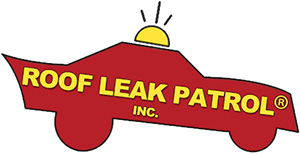Top 10 Causes of Roof Damage
While the roof of our home is an important part of life, we rarely give it a close look. We may not notice there’s a problem until something goes wrong. It’s a good idea to know what causes damage to a roof so even if you can’t get up there to inspect it first hand, you’ll be aware of what may create a potential problem.
- Tree limbs from nearby trees may fall onto the roof due to wind, heavy rain or hurricanes. If the tree limb is weakened by disease it might not take much for it to snap. It’s a good idea to inspect the trees around your home and remove any branches that may cause a problem.
- Those same trees may cause a build up of debris on the roof as well, especially in the valleys created by dormers or roof extensions. Leaves, sticks and pine needles can form a pile of mulch on your roof that remains constantly wet underneath causing the shingles to deteriorate and the roofing structure to rot. Of course gutters catch all this debris as well without a proper screen.
- Animals can cause a lot of damage to a roof. Wood peckers, nesting birds, squirrels, raccoons, mice, snakes, rats and bats can all work at pulling apart your roof. Wood peckers will look for insects under shingles and in rotting fascia boards while raccoons will pull off vent covers or tear off shingles searching for an entrance into your home.
- Gutters and downspouts are designed to channel water away from your roof. If the gutters are poorly maintained or full of debris, water can back up and seep into the edges of the roof. Over time this can cause the roof to develop areas of rot.
- Wind can lift shingles right off the roof and even minor wind damage can become a big problem later on if rain seeps in and leaks through the ceiling or down the walls. Sometimes you may notice a stray shingle or piece of shingle on the ground after a storm. It’s a good indication that the roof needs inspecting.
- Hail can damage the protective mineral coating on asphalt shingles, leaving bare spots. This exposes the shingle to other forms of damage such as moisture and UV rays. Excessive hail damage can shorten the life span of a roof.
- Ice may not be a problem here in Florida, but where the temperatures drop enough for snow and ice to develop, they can create problems for a roof. Ice can freeze along the eves causing the snow to back up. As freezing and thawing lifts the shingles, melting ice and snow can leak into your home.
- Roof flashing around chimneys, vents and along the edge of a roof are designed to keep water out of the house, but if the flashing is damaged it can let water seep underneath the roof, causing rot or leaks to the interior of your home. The roofing compound that seals the flashing down can also dry out and come loose causing water damage.
- The sun’s UV rays play a big part in the life span of a roof. Over time shingles can dry out and crack. They can actually fall off the roof leaving sections with little or no protection. UV damage is just a part of aging process of a roof but is also a sign that a roof may need replacing.
- While all of these problems can cause damage to your roof, they have one thing in common. They can let moisture in and moisture is the number one culprit when it comes to damaging your roof.

